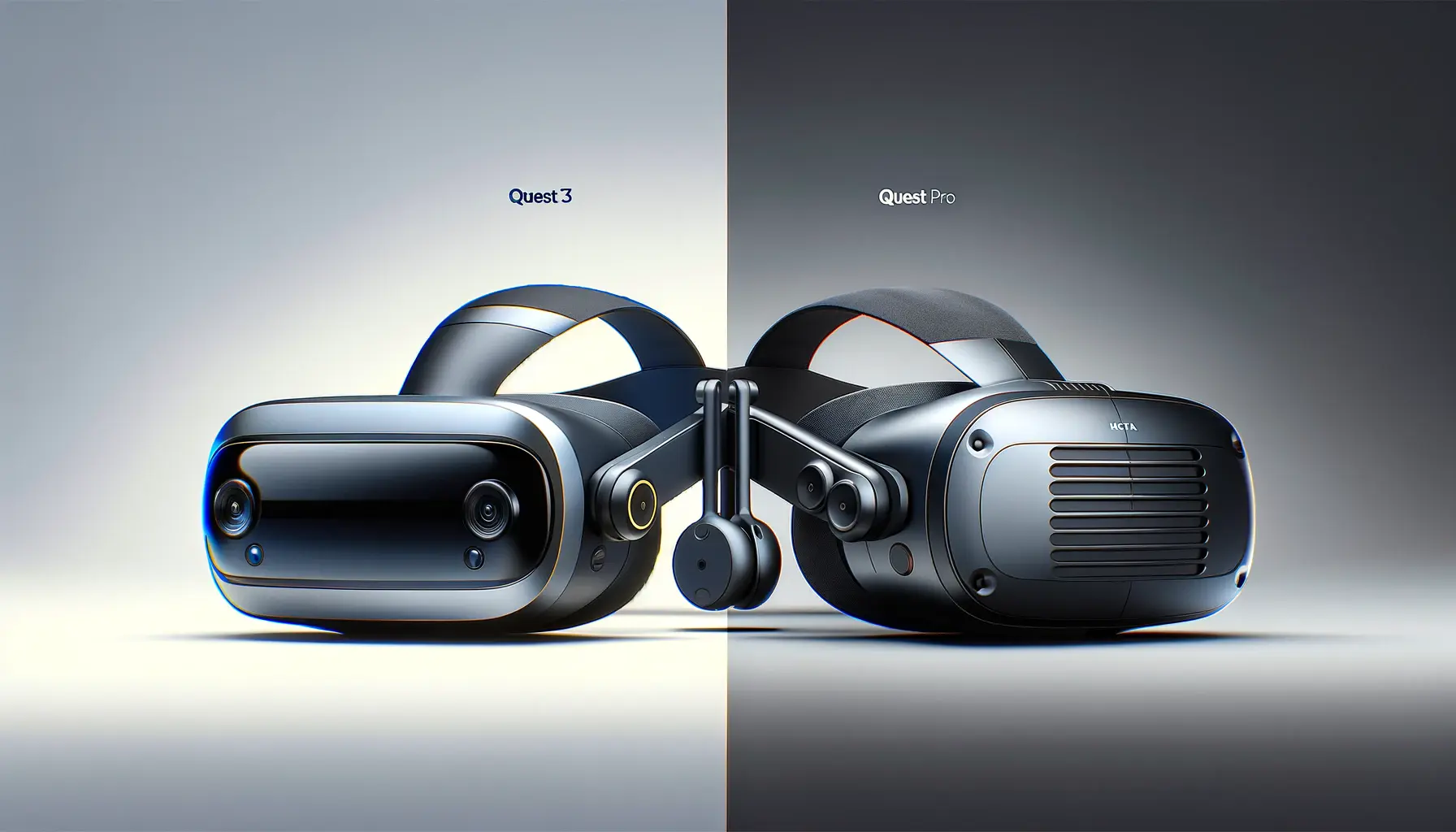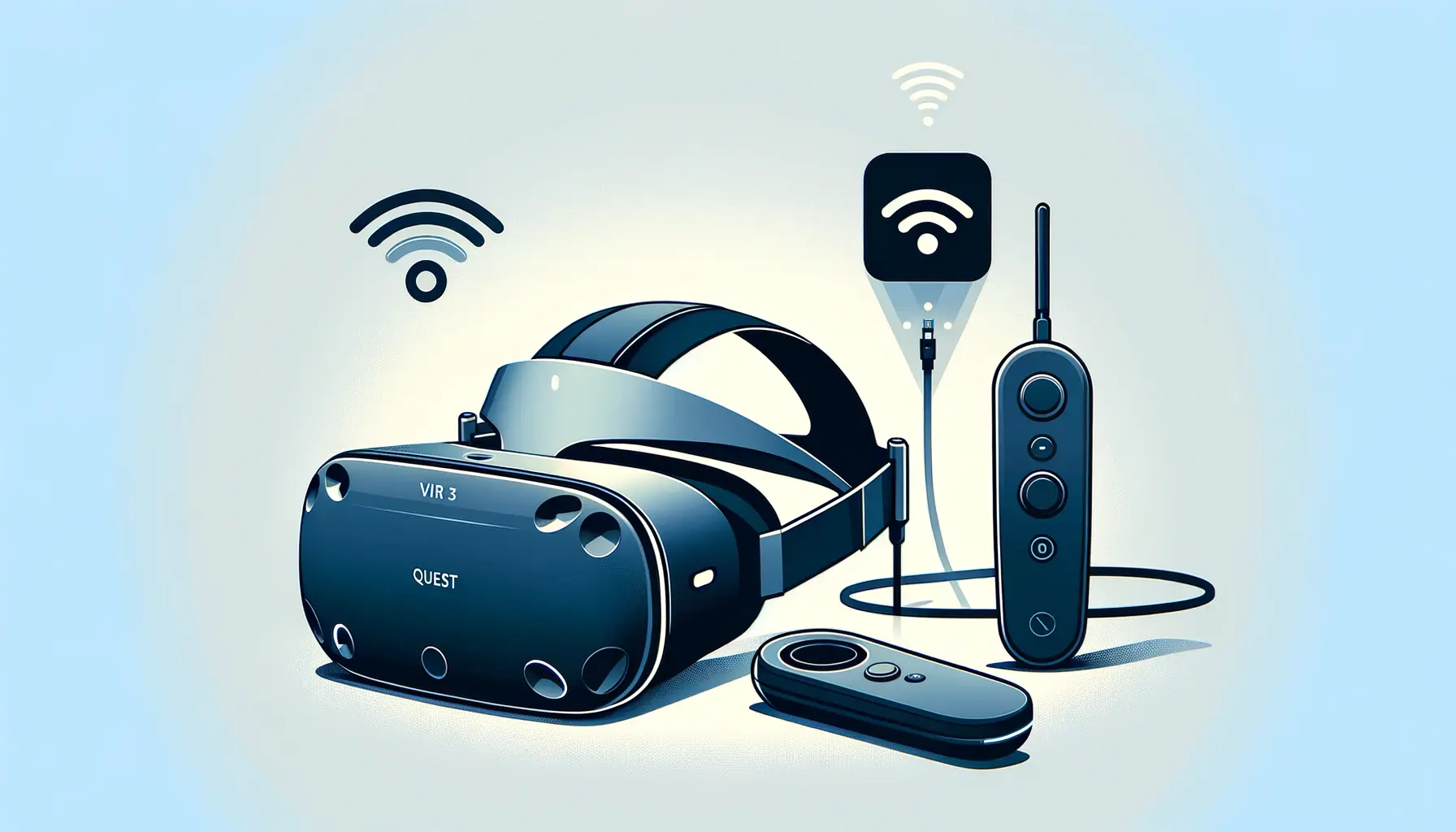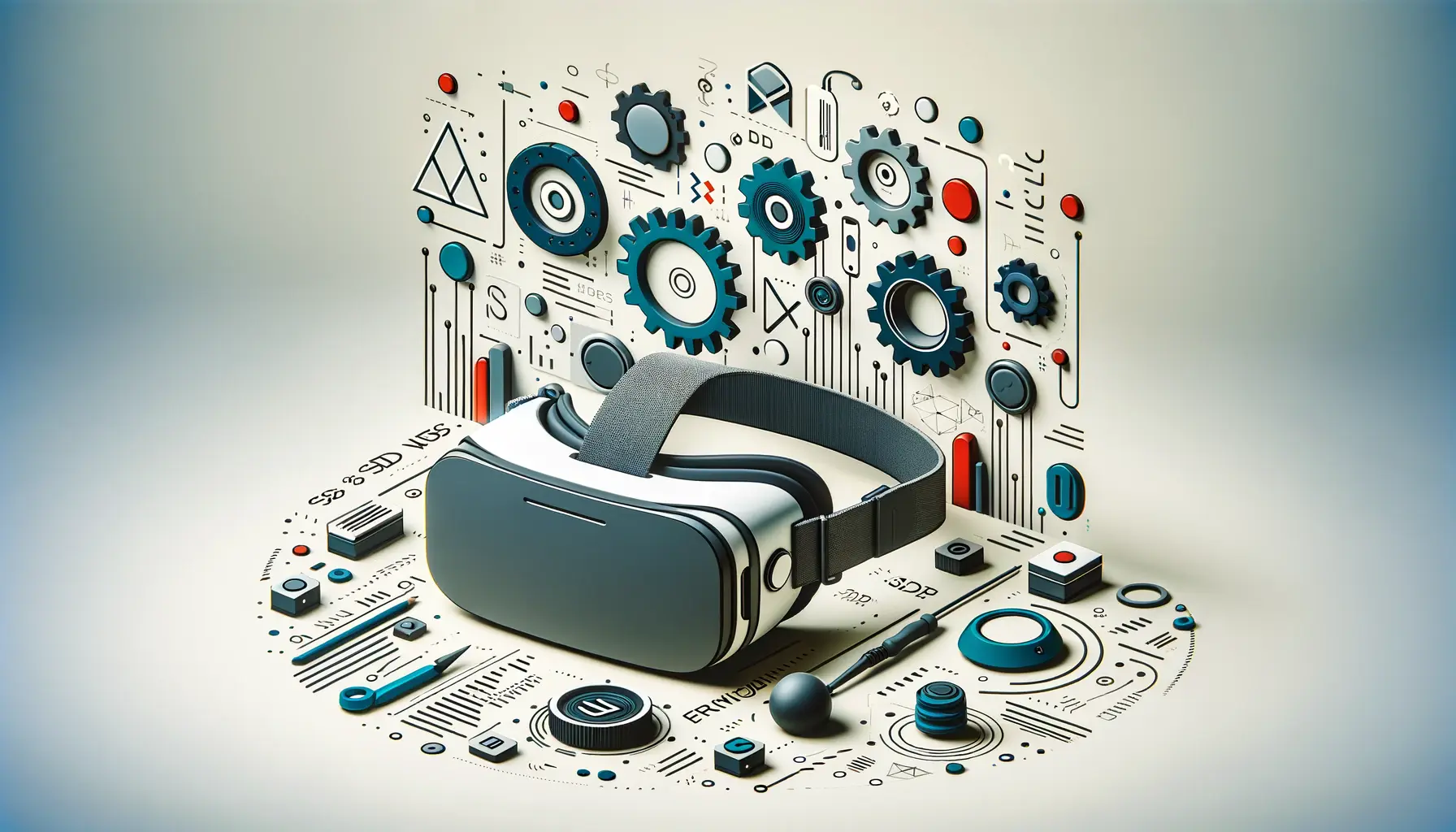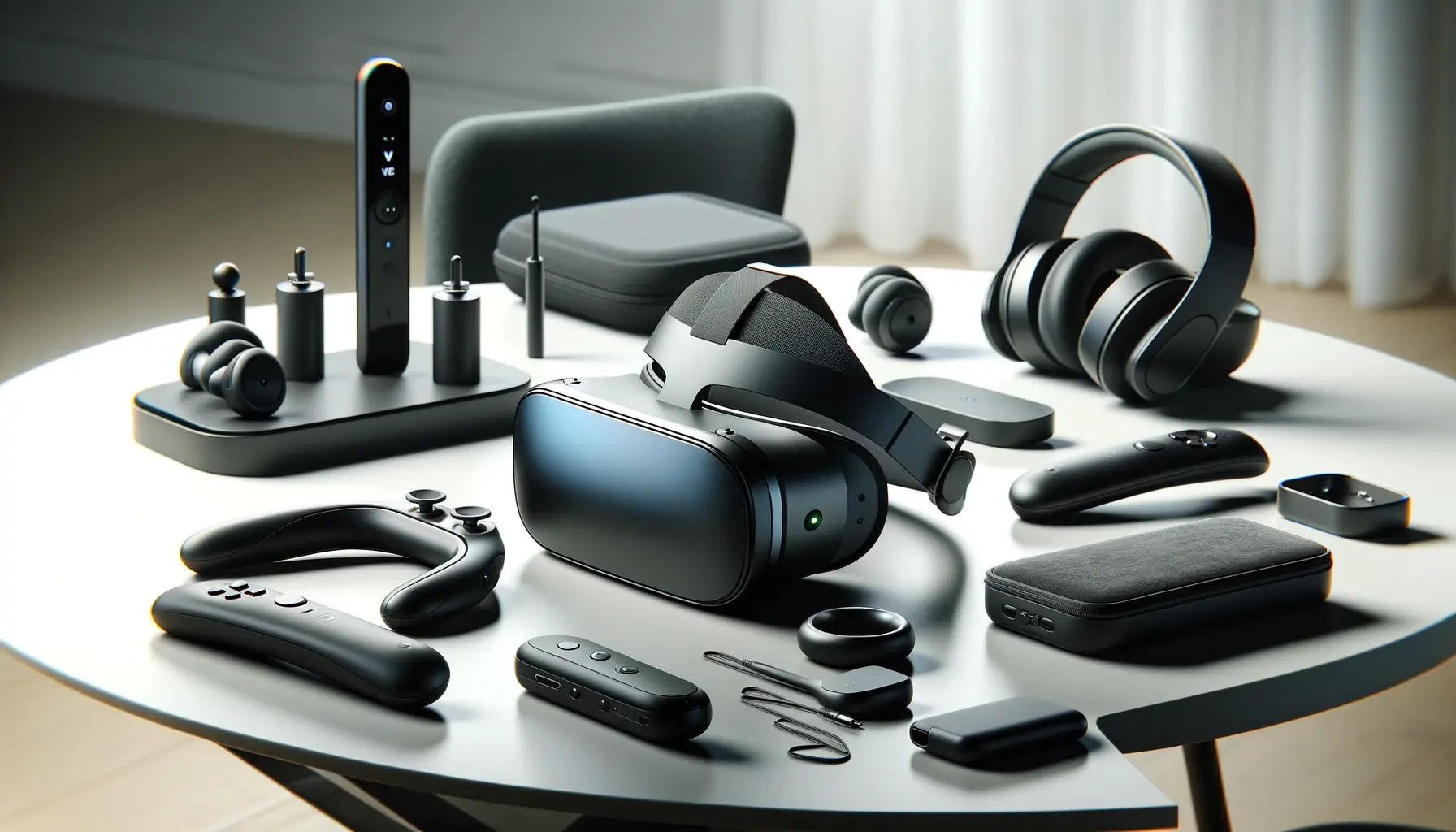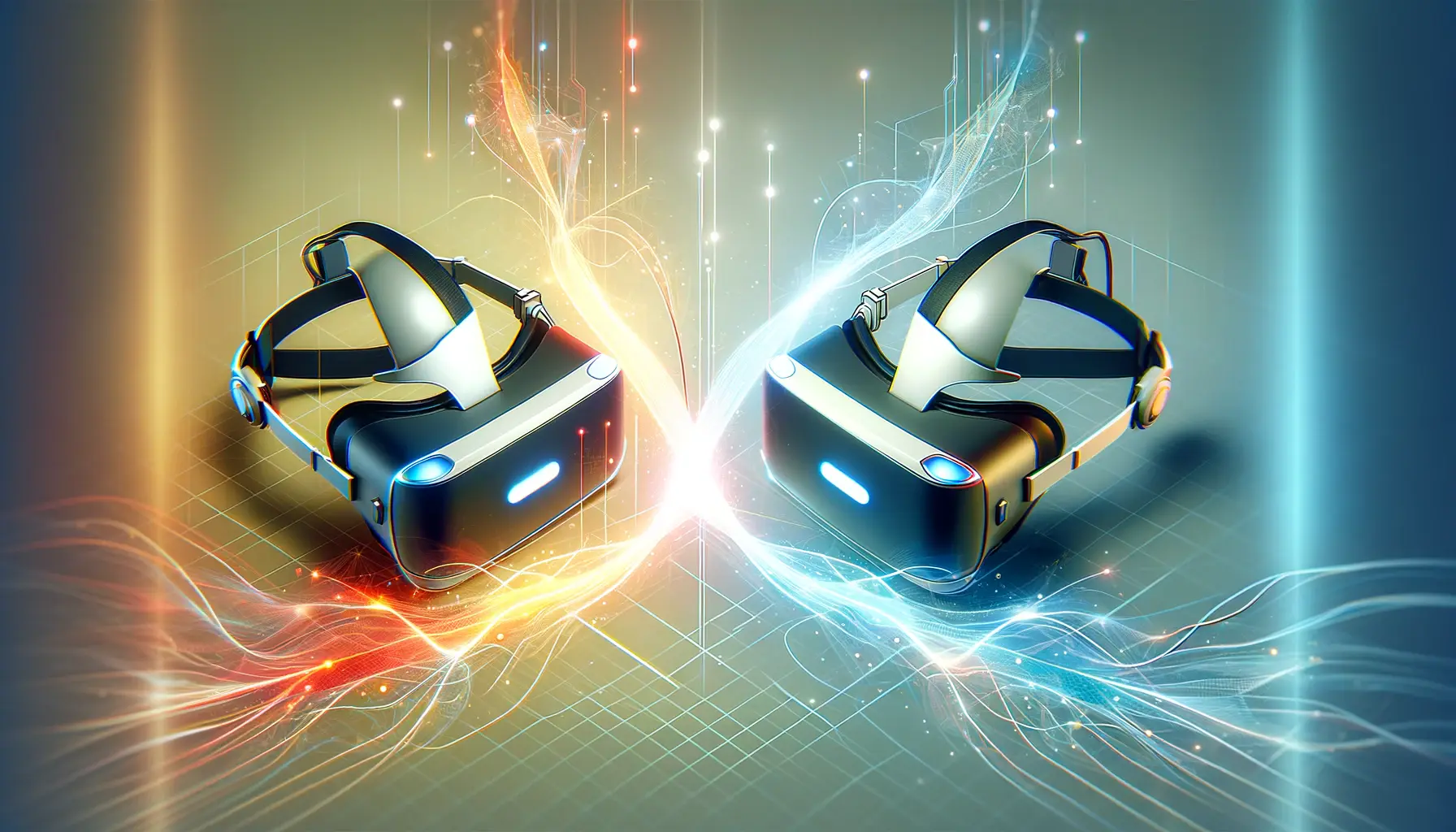The realm of virtual reality (VR) has expanded beyond the confines of gaming and entertainment, venturing into the fitness industry with innovative solutions that promise to revolutionize how we exercise.
Among the frontrunners of this technological evolution is the Meta Quest 3, a device that has garnered attention for its potential to blend the immersive experience of VR with physical fitness.
This article delves into the capabilities of the Meta Quest 3 as a fitness tool, exploring its features, applications, and the overall impact it has on the fitness regimen of its users.
With the rise of home fitness solutions, especially in the wake of global challenges that have limited access to traditional gym environments, the Meta Quest 3 emerges as a beacon of innovation.
It offers a unique combination of entertainment and exercise, aiming to make fitness more engaging and accessible.
This review will dissect the aspects that make the Meta Quest 3 a noteworthy addition to the fitness technology landscape, examining its utility, effectiveness, and how it stands in comparison to conventional fitness methods and other VR fitness solutions.
- Introduction to Meta Quest 3 and Its Fitness Capabilities
- Exploring the Impact of Virtual Reality on Fitness
- Comparative Analysis: Meta Quest 3 vs. Traditional Fitness Methods
- Optimizing Your Fitness Routine with Meta Quest 3
- Community and Social Features in Meta Quest 3 Fitness
- Future Trends in VR Fitness with Meta Quest 3
- Maximizing Health Benefits with Meta Quest 3
- Embracing the Future of Fitness with Meta Quest 3
- Meta Quest 3 Fitness FAQs
Introduction to Meta Quest 3 and Its Fitness Capabilities
The Meta Quest 3 is not just another VR headset; it’s a gateway to a new dimension of fitness that promises to make workouts more immersive and enjoyable.
With its advanced tracking capabilities, high-resolution display, and a vast library of fitness-oriented applications, the Quest 3 is designed to cater to a wide range of fitness needs and preferences.
From high-intensity interval training (HIIT) to yoga and meditation, the device offers something for everyone, making it a versatile tool in the pursuit of health and wellness.
One of the key features that set the Meta Quest 3 apart in the fitness domain is its untethered design.
The absence of cables allows users to move freely, offering a more natural and unrestricted exercise experience.
This feature is particularly beneficial for workouts that require a wide range of motion, such as boxing, dance, and functional training exercises.
Moreover, the Quest 3’s improved ergonomics and lighter build reduce the strain on the user, enabling longer and more comfortable workout sessions.
Engaging Fitness Applications
The Meta Quest 3 shines when it comes to the variety and quality of its fitness applications.
Titles like ‘Supernatural’ and ‘FitXR’ transform the living room into a virtual gym, where users can engage in guided workouts led by virtual trainers, set against visually stunning backdrops.
These apps not only track the user’s movements and provide real-time feedback but also create a competitive and motivational environment through leaderboards and personal progress tracking.
Furthermore, the integration of social features allows users to connect with friends and participate in group workouts, making fitness a more social and engaging activity.
This aspect of the Meta Quest 3 addresses one of the common challenges faced by individuals working out at home: the lack of motivation and accountability.
By bringing a sense of community and competition into the virtual fitness space, the Quest 3 encourages users to stay consistent with their fitness goals.
The Meta Quest 3’s untethered design and diverse fitness applications make it a revolutionary tool in home fitness, offering a blend of freedom, engagement, and social connectivity.
Exploring the Impact of Virtual Reality on Fitness
The integration of virtual reality into fitness routines represents a significant shift in how individuals approach exercise.
The immersive nature of VR technology, exemplified by the Meta Quest 3, offers a unique opportunity to enhance the workout experience, making it more engaging and less monotonous.
This section explores the psychological and physical impacts of incorporating VR into fitness, highlighting the benefits and challenges it presents.
Virtual reality fitness programs have the potential to significantly increase motivation by transporting users to environments that are far more stimulating than the typical four walls of a gym.
This immersive experience can lead to longer, more frequent, and more intense workout sessions as users are distracted from the physical exertion and more focused on the virtual experience.
Psychological Benefits of VR Fitness
- Increased Motivation: The gamification of exercise through VR, such as earning rewards and reaching new levels, provides a compelling incentive for users to remain consistent with their fitness routines.
- Stress Reduction: VR environments can also offer serene and calming settings, ideal for yoga and meditation, helping to reduce stress and anxiety levels.
- Enhanced Engagement: The novelty and variety of VR workouts keep the exercise routine fresh and engaging, combating the boredom that often accompanies traditional fitness methods.
Physical Benefits of VR Fitness
- Comprehensive Workouts: VR fitness applications are designed to target various muscle groups, ensuring a well-rounded workout that can be customized to suit individual fitness levels and goals.
- Improved Coordination: Many VR fitness games require users to perform complex movements that involve coordination and balance, thereby enhancing these physical skills over time.
- Accessible Fitness: For individuals with mobility issues or those who find traditional gym settings intimidating, VR fitness provides a more accessible and comfortable way to engage in physical activity.
While the benefits of VR fitness are clear, there are also challenges to consider, such as the initial cost of the equipment and the need for a suitable space to safely move around.
However, as VR technology becomes more widespread and affordable, these barriers are likely to diminish, making VR fitness a more accessible option for a broader audience.
Incorporating virtual reality into fitness routines with devices like the Meta Quest 3 not only enhances the workout experience but also offers significant psychological and physical benefits, making exercise more enjoyable and effective.
Comparative Analysis: Meta Quest 3 vs. Traditional Fitness Methods
The advent of VR fitness platforms, particularly the Meta Quest 3, has sparked a debate on the effectiveness of virtual reality workouts compared to traditional fitness methods.
This comparative analysis aims to shed light on the strengths and weaknesses of each approach, providing insights into how VR fitness, and specifically the Meta Quest 3, stacks up against conventional exercise routines.
Traditional fitness methods, ranging from gym workouts to outdoor activities, have long been the cornerstone of physical health and wellness.
These methods offer tangible benefits, such as the use of physical equipment for resistance training, the social aspect of group classes, and the guidance of professional trainers.
However, the rise of VR fitness introduces a new dimension to exercise that challenges the status quo.
Accessibility and Convenience
- Traditional Fitness: Requires access to gym facilities or outdoor spaces, which may not be convenient for everyone. The need to travel to a specific location can be a barrier to regular exercise.
- Meta Quest 3: Offers the convenience of working out at home without the need for large equipment or a significant amount of space. This accessibility can lead to more consistent exercise habits.
Engagement and Motivation
- Traditional Fitness: Can become monotonous over time, leading to a decrease in motivation. The social aspect of group classes can provide some level of engagement.
- Meta Quest 3: The immersive and game-like experience can significantly increase motivation and engagement, making workouts feel less like a chore and more like an enjoyable activity.
Cost and Investment
- Traditional Fitness: May involve ongoing costs such as gym memberships, personal trainer fees, and travel expenses. The initial investment is generally lower compared to purchasing VR equipment.
- Meta Quest 3: Requires an upfront investment for the headset and accessories. However, many VR fitness apps offer free or low-cost options, potentially saving money in the long run.
In conclusion, while traditional fitness methods offer proven benefits and the advantage of real-world social interactions, the Meta Quest 3 and VR fitness, in general, present a compelling alternative.
They provide an engaging, convenient, and versatile option for staying fit, particularly for those who struggle with motivation or access to traditional fitness resources.
The choice between VR fitness and traditional methods ultimately depends on personal preferences, goals, and circumstances.
The Meta Quest 3 bridges the gap between technology and fitness, offering a unique and effective way to engage in physical activity, challenging the traditional fitness paradigm.
Optimizing Your Fitness Routine with Meta Quest 3
Adopting the Meta Quest 3 into your fitness regimen is not just about playing VR games; it’s about strategically utilizing this advanced technology to achieve your fitness goals.
This part of the article provides practical tips and strategies for optimizing your workout routine with the Meta Quest 3, ensuring you get the most out of your virtual reality fitness experience.
The versatility of the Meta Quest 3 allows for a wide range of workouts, from cardio and strength training to flexibility exercises and meditation.
By following a few key guidelines, users can enhance their fitness journey, making each VR workout session both effective and enjoyable.
Setting Realistic Fitness Goals
- Before diving into VR fitness, it’s crucial to set clear, achievable goals. Whether it’s losing weight, improving cardiovascular health, or increasing strength, having specific objectives will guide your choice of VR fitness apps and workouts.
- Track your progress using the Meta Quest 3’s built-in features or compatible fitness apps. Monitoring improvements can motivate you to stick with your routine and adjust your goals as needed.
Creating a Balanced Workout Plan
- Don’t rely solely on one type of workout. The Meta Quest 3 offers a variety of fitness apps that cater to different needs. Incorporate a mix of cardio, strength, flexibility, and balance exercises into your routine for a well-rounded fitness regimen.
- Schedule your VR workouts just like any other appointment. Consistency is key to achieving fitness results, so make sure to allocate specific times for your VR fitness sessions.
Ensuring a Safe Workout Environment
- Clear enough space in your workout area to move freely without the risk of bumping into furniture or walls. Safety should always be a priority when using the Meta Quest 3 for fitness.
- Wear appropriate footwear, even when exercising indoors, to provide your feet with the necessary support during active VR workouts.
By integrating these strategies into your fitness routine, the Meta Quest 3 can become a powerful tool in achieving your health and wellness goals.
The key is to approach VR fitness with the same seriousness as traditional exercise, ensuring that each session contributes positively to your overall fitness journey.
Remember, the effectiveness of your VR fitness routine with the Meta Quest 3 depends on your commitment to your goals, the diversity of your workout plan, and maintaining a safe environment for your sessions.
Community and Social Features in Meta Quest 3 Fitness
The Meta Quest 3 transcends the boundaries of traditional fitness by incorporating community and social features that enhance the workout experience.
These features not only motivate users to engage in regular exercise but also foster a sense of belonging and support among fitness enthusiasts.
This section explores how the Meta Quest 3 leverages social connectivity to revolutionize the concept of virtual fitness.
One of the standout aspects of the Meta Quest 3 is its ability to connect users from around the globe, creating a virtual fitness community that encourages collaboration, competition, and support.
This global network transforms solitary workouts into social events, making fitness a more enjoyable and motivating activity.
Joining Virtual Fitness Classes
- With the Meta Quest 3, users can participate in live virtual classes, competing and interacting with others in real-time. This feature simulates the experience of attending a physical class, including the camaraderie and competitive spirit that come with group workouts.
- Virtual fitness classes on the Quest 3 cater to a wide range of interests and skill levels, ensuring that everyone can find a workout that suits their needs.
Tracking and Sharing Progress
- The Meta Quest 3 allows users to track their fitness progress and share achievements with friends or within the community. This accountability and visibility can significantly boost motivation and commitment to fitness goals.
- Sharing success stories and challenges with the community encourages support and advice, creating a nurturing environment for personal growth and improvement.
Competing in Challenges
- Regular challenges and competitions are hosted within the Meta Quest 3 platform, giving users the opportunity to test their skills against others. These events are not only fun but also push participants to reach new levels of fitness.
- Winning or simply participating in these challenges can earn users rewards, such as virtual trophies or exclusive content, adding an extra layer of incentive to exercise.
The integration of community and social features in the Meta Quest 3 significantly enhances the appeal of virtual reality fitness.
By creating a supportive and interactive environment, the Quest 3 makes exercise a more engaging and socially rewarding experience, proving that fitness can be both effective and fun when done together, even in a virtual space.
The social features of the Meta Quest 3, including virtual classes, progress sharing, and fitness challenges, play a crucial role in building a supportive and motivated fitness community.
Future Trends in VR Fitness with Meta Quest 3
The landscape of fitness technology is rapidly evolving, with virtual reality (VR) at the forefront of this transformation.
The Meta Quest 3, as a leading VR headset, not only provides a snapshot of the current state of VR fitness but also offers insights into future trends that could further revolutionize how we exercise.
This section delves into the potential advancements and innovations in VR fitness, highlighting the role of the Meta Quest 3 in shaping the future of physical activity.
As VR technology continues to advance, the Meta Quest 3 is expected to play a pivotal role in introducing new features and capabilities that will enhance the VR fitness experience.
These innovations promise to make workouts more immersive, effective, and personalized, catering to the evolving needs and preferences of fitness enthusiasts worldwide.
Enhanced Immersion and Realism
- Future updates to the Meta Quest 3 could include more realistic graphics and environments, making the virtual workout experience even more immersive. Imagine running through lifelike simulations of exotic locations or historical cities, enhancing the enjoyment and motivation to exercise.
- Advancements in haptic feedback technology could also introduce physical sensations that mimic real-world interactions, such as the resistance of a rowing machine or the impact of a punching bag, further blurring the lines between virtual and physical exercise.
Personalized Workout Programs
- With the integration of artificial intelligence (AI), the Meta Quest 3 could offer highly personalized workout programs that adapt to the user’s fitness level, goals, and preferences. This would ensure that each workout is optimized for effectiveness and enjoyment.
- AI could also provide real-time coaching and feedback, correcting form and technique during exercises, much like a personal trainer would in a traditional gym setting.
Integration with Health and Fitness Ecosystems
- The future of VR fitness with the Meta Quest 3 may see deeper integration with health and fitness ecosystems, allowing for seamless connectivity with other fitness devices, health apps, and platforms. This would enable a holistic view of the user’s health and fitness, combining VR workouts with data from wearable devices and nutrition tracking apps.
- This integration could also facilitate community challenges and competitions based on comprehensive health and fitness metrics, further enhancing the social aspect of VR fitness.
The potential for VR fitness with the Meta Quest 3 is vast, with future innovations set to enhance the accessibility, effectiveness, and enjoyment of exercise.
As technology progresses, the Meta Quest 3 and similar platforms will likely become integral components of fitness routines, offering a glimpse into a future where virtual and physical fitness are seamlessly integrated.
The future of VR fitness, led by innovations in the Meta Quest 3, promises a more immersive, personalized, and integrated exercise experience, setting new standards for how we engage in physical activity.
Maximizing Health Benefits with Meta Quest 3
The Meta Quest 3 is not just a tool for immersive gaming; it’s a gateway to a healthier lifestyle.
By leveraging the capabilities of this advanced VR headset, users can unlock a myriad of health benefits that go beyond traditional exercise methods.
This final section explores how to maximize the health benefits of using the Meta Quest 3 for fitness, ensuring users can achieve their wellness goals effectively.
Integrating VR fitness into your daily routine can lead to significant improvements in physical health, mental well-being, and overall quality of life.
The Meta Quest 3, with its diverse range of fitness applications and features, offers a unique platform to engage in regular physical activity in a fun and engaging way.
Cardiovascular Health and Weight Loss
- Engaging in VR workouts with the Meta Quest 3 can significantly boost cardiovascular health. High-intensity games and fitness applications provide vigorous aerobic exercise, helping to improve heart health and burn calories.
- Consistent use of VR fitness programs can also aid in weight loss and management by providing an enjoyable way to engage in regular, sustained physical activity.
Mental Health and Cognitive Function
- VR fitness with the Meta Quest 3 offers more than just physical health benefits; it also has a positive impact on mental health. The immersive nature of VR can help reduce stress and anxiety, providing a mental escape from the pressures of daily life.
- Furthermore, the cognitive engagement required in navigating virtual environments and interacting with virtual objects can enhance cognitive function, including attention, spatial awareness, and problem-solving skills.
Flexibility, Balance, and Strength
- Many VR fitness applications available on the Meta Quest 3 focus on improving flexibility, balance, and strength. Yoga and tai chi apps, for example, offer guided sessions that help increase flexibility and balance, while strength-training programs provide exercises to build muscle using bodyweight and virtual resistance.
- The versatility of VR workouts ensures that users can target different muscle groups, promoting overall muscular balance and reducing the risk of injury.
To maximize the health benefits of the Meta Quest 3, users should aim to incorporate a variety of workouts into their routine, ensuring a balanced approach to fitness that addresses cardiovascular health, strength, flexibility, and mental well-being.
By doing so, the Meta Quest 3 becomes more than just a gaming device; it becomes an integral part of a holistic approach to health and wellness.
The Meta Quest 3 offers a comprehensive platform for achieving a wide range of health benefits, making it a valuable addition to anyone’s fitness and wellness regimen.
Embracing the Future of Fitness with Meta Quest 3
The journey through the capabilities, benefits, and future potential of the Meta Quest 3 for fitness underscores a pivotal shift in how we perceive and engage with physical activity.
This VR platform not only revolutionizes the fitness industry by making workouts more accessible, engaging, and enjoyable but also offers a glimpse into the future where technology and health seamlessly converge.
The Meta Quest 3 stands as a testament to the innovative spirit of virtual reality, pushing the boundaries of what’s possible in fitness and wellness.
The Transformative Power of VR Fitness
As we’ve explored, the Meta Quest 3 offers a unique blend of entertainment and exercise, providing users with an immersive experience that motivates and inspires.
From enhancing cardiovascular health to improving mental well-being, the benefits of integrating the Meta Quest 3 into one’s fitness routine are profound.
The device’s ability to simulate various physical activities within a virtual environment means that users can enjoy a diverse range of workouts from the comfort of their homes, breaking down barriers to regular exercise.
A Community of Motivated Fitness Enthusiasts
The social features of the Meta Quest 3 have created a vibrant community of users who share a common goal of achieving better health and fitness.
This sense of community not only fosters motivation and accountability but also adds a layer of enjoyment to the workout experience that traditional fitness methods often lack.
The future of VR fitness looks promising, with potential advancements in technology poised to enhance the user experience further, making fitness more personalized, immersive, and effective.
- The integration of artificial intelligence for personalized workout plans.
- Advancements in haptic feedback for a more tactile experience.
- Deeper integration with health and fitness ecosystems for a holistic view of wellness.
In conclusion, the Meta Quest 3 for fitness represents a significant leap forward in how we approach physical activity.
By combining the immersive power of virtual reality with the fundamental need for physical exercise, the Meta Quest 3 offers a compelling alternative to traditional fitness methods.
As technology continues to evolve, the potential for VR to transform the fitness industry is limitless, promising a future where staying fit and healthy is not just necessary but enjoyable and accessible to all.
Meta Quest 3 Fitness FAQs
Explore the most common questions about using Meta Quest 3 for fitness, providing insights into how this innovative VR headset can transform your workout routine.
Its wireless design, immersive VR experiences, and extensive library of fitness apps make Meta Quest 3 a versatile tool for engaging and effective workouts.
Yes, through high-intensity VR games and fitness apps, it provides an enjoyable way to burn calories and support weight loss efforts.
Absolutely, it offers a range of applications tailored to various fitness levels, from beginners to advanced athletes, ensuring everyone can benefit.
The immersive VR environment and gamified fitness experiences increase engagement and motivation, making workouts feel more like play than exercise.
Yes, many Meta Quest 3 fitness apps offer progress tracking, providing feedback on your performance and improvements over time.
From cardio and strength training to yoga and meditation, Meta Quest 3 supports a wide variety of workouts to fit your fitness goals.
No additional equipment is necessary; the Meta Quest 3 offers a comprehensive fitness experience with just the VR headset and controllers.
Meta Quest 3 adds an innovative layer to fitness by making workouts more immersive and enjoyable, potentially increasing consistency and effectiveness.



